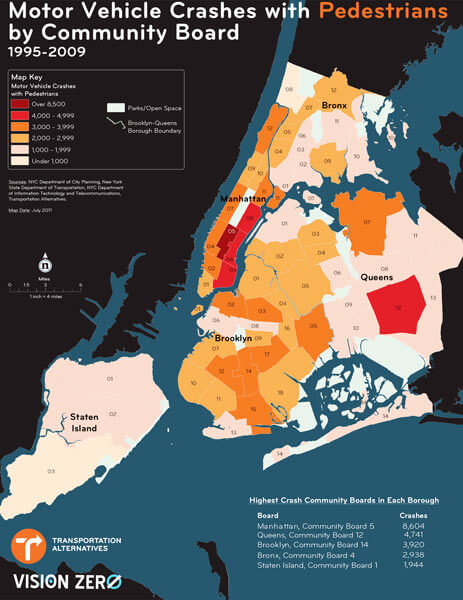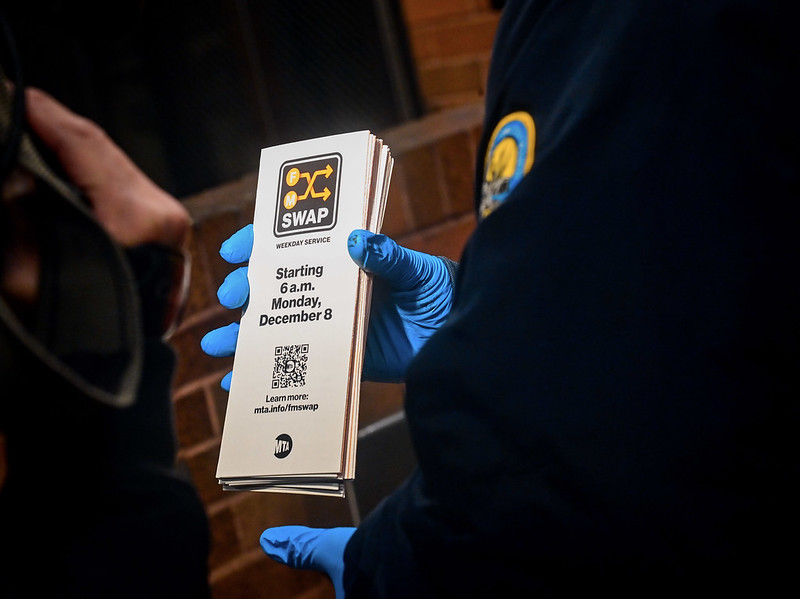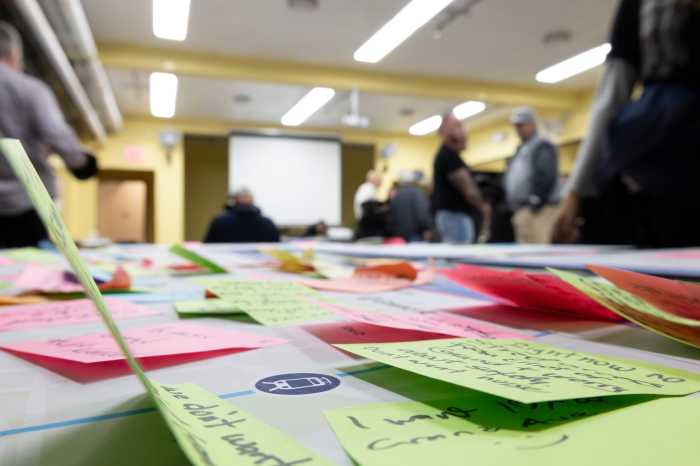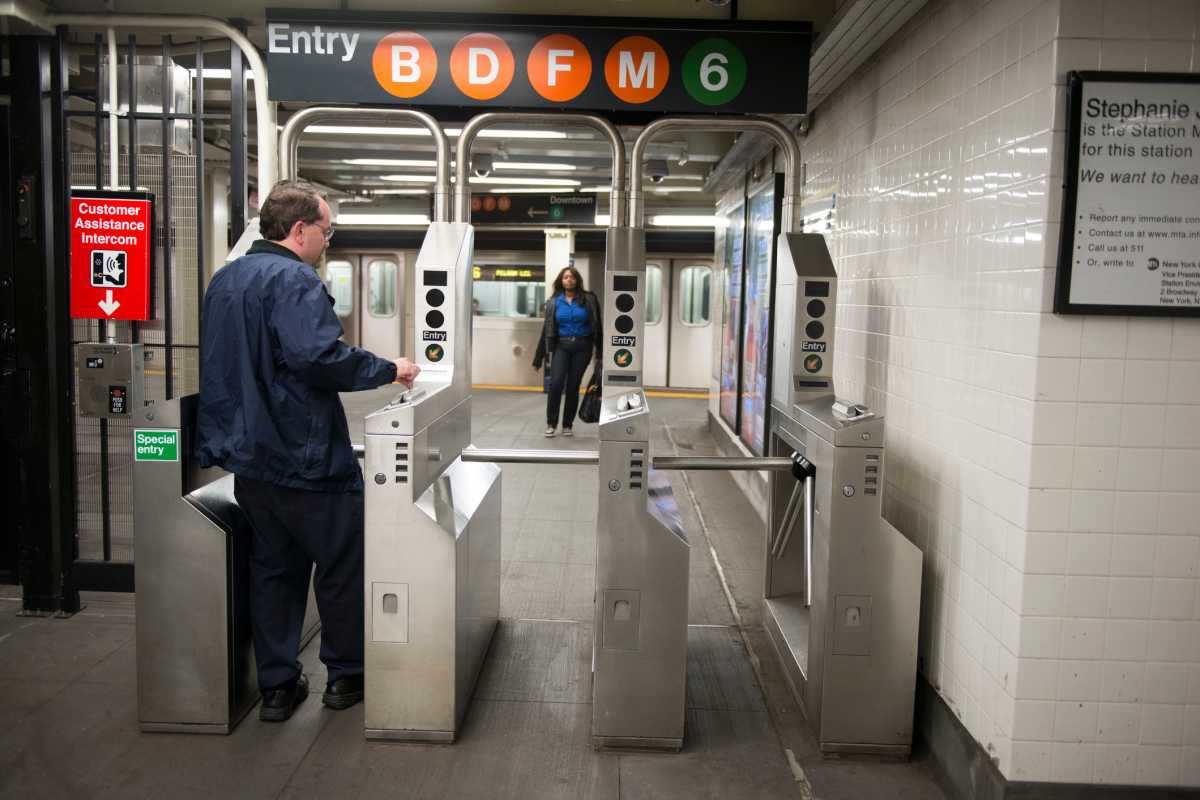By Ivan Pereira
A transportation advocacy group has identified southeast Queens as the borough’s most dangerous place for pedestrians and it is calling on the city to do more to prevent people from getting hurt.
Transportation Alternatives released Monday its first crash map report “Walking in Traffic Violence,” which has provided a detailed look at the number of crashes involving pedestrians by community board district.
Community Board 12, which covers the neighborhoods of Jamaica, Hollis, St. Albans, Springfield Gardens, Baisley Park, Rochdale Village and South Jamaica, was the second-highest board in all five boroughs with accidents that took place between 1995 and 2009 with 4,741 incidents, according to the report.
Paul Steely White, TA’s executive director, said the stats show that a New Yorker is twice as likely to be killed while walking than in other cities in the world.
“We’ve all experienced the epidemic of dangerous driving in New York City,” White said. “Despite the tremendous efforts made by the [city Department of Transportation] to redesign streets for safety, behavior behind the wheel puts people in harm’s way every day.”
The data for the map was collected from information provided by the state DOT and other agencies, including the Department of Motor Vehicles. Manhattan’s Community Board 5, which covers Midtown, had the highest number of crashes with 8,604 incidents during the 14-year period.
Queens Community Board 7, which covers Flushing, Bay Terrace, College Point, Whitestone, Malba, Beechhurst, Queensboro Hill and Willets Point, is the borough’s section with the second-highest number of crashes involving pedestrians with 3,567, according to the report.
Turning to the safest areas for pedestrians, Queens Community Board 14, which covers the Rockaways, came in third in the city with the fewest number of crashes with 1,012 incidents. Staten Island’s Community Board 3 had the lowest number of crashes with 653 incidents, according to the nonprofit transportation advocacy group.
The report said there are 80 different factors leading to the crashes and the biggest component is poor driver behavior.
Motorists who run lights, speed and fail to yield to pedestrians have hurt too many people, according to White.
“To bring the number of people injured and killed in traffic down to zero, we need the NYPD to institute a zero-tolerance crackdown on unsafe driving,” he said. “For too long, dangerous and lethal drivers have gotten off with minimal or, astonishingly, no charges at all.
Yvonne Reddick, the district manager of CB 12, who was hospitalized in the spring following a car accident, acknowledged that some areas are problematic for both drivers and pedestrians, but was shocked that the study singled out the entire district.
“I know we had some locations, like Parsons [Boulevard] and Hillside [Avenue], that were accident-prone, but I didn’t know about the other areas,” she said.
Reach reporter Ivan Pereira by e-mail at ipereira@cnglocal.com or by phone at 718-260-4546.





































